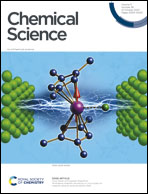Solvent-controlled E/Z isomerization vs. [2 + 2] photocycloaddition mediated by supramolecular polymerization†
Abstract
Control over the photochemical outcome of photochromic molecules in solution represents a major challenge, as photoexcitation often leads to multiple competing photochemical and/or supramolecular pathways resulting in complex product mixtures. Herein, we demonstrate precise and efficient control over the photochemical behaviour of cyanostilbenes in solution using a straightforward solvent-controlled approach based on supramolecular polymerization. To this end, we designed a π-extended cyanostilbene bolaamphiphile that exhibits tuneable solvent-dependent photochemical behaviour. Photoirradiation of the system in a monomeric state (in organic solvents) exclusively leads to a highly reversible and efficient E/Z photoisomerization, whereas a nearly quantitative [2 + 2] photocycloaddition into a single cyclobutane (anti head-to-tail) occurs in aqueous solutions. These results can be rationalized by a highly regular and preorganized antiparallel J-type arrangement of the cyanostilbene units that is driven by aqueous supramolecular polymerization. The presented concept demonstrates a novel approach towards solvent-selective and environmentally friendly photochemical transformations, which is expected to broaden the scope of supramolecular polymerization.
![Graphical abstract: Solvent-controlled E/Z isomerization vs. [2 + 2] photocycloaddition mediated by supramolecular polymerization](/en/Image/Get?imageInfo.ImageType=GA&imageInfo.ImageIdentifier.ManuscriptID=D0SC03442H&imageInfo.ImageIdentifier.Year=2020)


 Please wait while we load your content...
Please wait while we load your content...